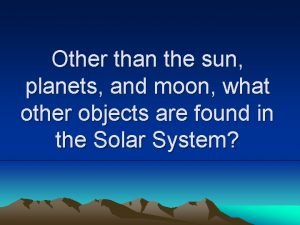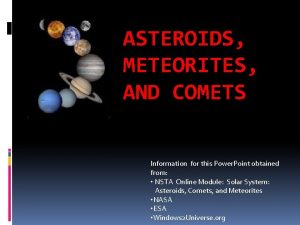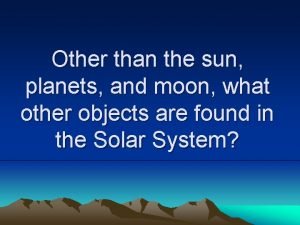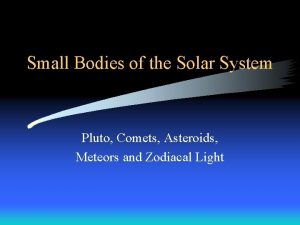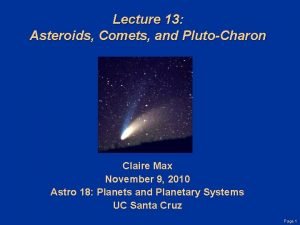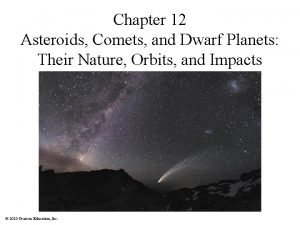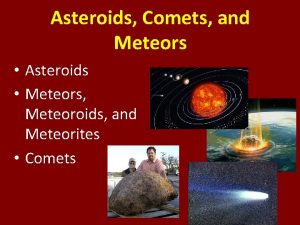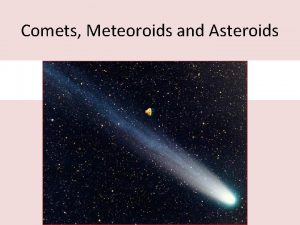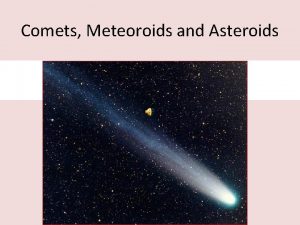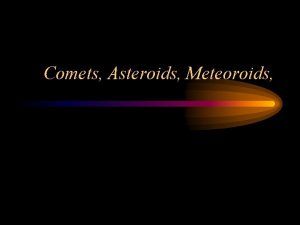COMETS ASTEROIDS AND METEOROIDS SOLAR SYSTEM PHENOMENA S





- Slides: 5

COMETS, ASTEROIDS AND METEOROIDS SOLAR SYSTEM PHENOMENA

S 6 E 1. E Ask questions to compare and contrast the characteristics, composition, and location of comets, asteroids, and meteoroids

SPACE DEBRIS: ACCORDING TO NASA • Asteroid-a relatively small, inactive, rocky body orbiting the sun • Meteoroid-a small particle from a comet or asteroid orbiting the sun • Meteor-the light phenomena which results when a meteoroid enters Earth’s atmosphere and vaporizes. “Shooting Star” • Meteorite-a meteoroid that survives its passage through the Earth’s atmosphere and lands upon the Earth’s surface

COMETS Is an icy body that releases gas or dust. They are known as snowy dirtballs. • Contain dust, ice, carbon dioxide, ammonia, methane and other chemical substances • Originate in the Oort Cloud far beyond Pluto • A comet’s tail can measure 1 million miles to 100 million miles! • Comet’s need a minimum of 200 years to orbit the sun

• Every day, Earth is bombarded with more than 100 tons of dust and sand-sized particles. • About once a year, an automobile-sized asteroid hits Earth's atmosphere, creates an impressive fireball, and burns up before reaching the surface. THE THREAT TO EARTH Should we be worried? • Every 2, 000 years or so, a meteoroid the size of a football field hits Earth and causes significant damage to the area. • Only once every few million years, an object large enough to threaten Earth's civilization comes along. Impact craters on Earth, the moon and other planetary bodies are evidence of these occurrences. • Space rocks smaller than about 25 meters (about 82 feet) will most likely burn up as they enter the Earth's atmosphere and cause little or no damage. • If a rocky meteoroid larger than 25 meters but smaller than one kilometer ( a little more than 1/2 mile) were to hit Earth, it would likely cause local damage to the impact area.
